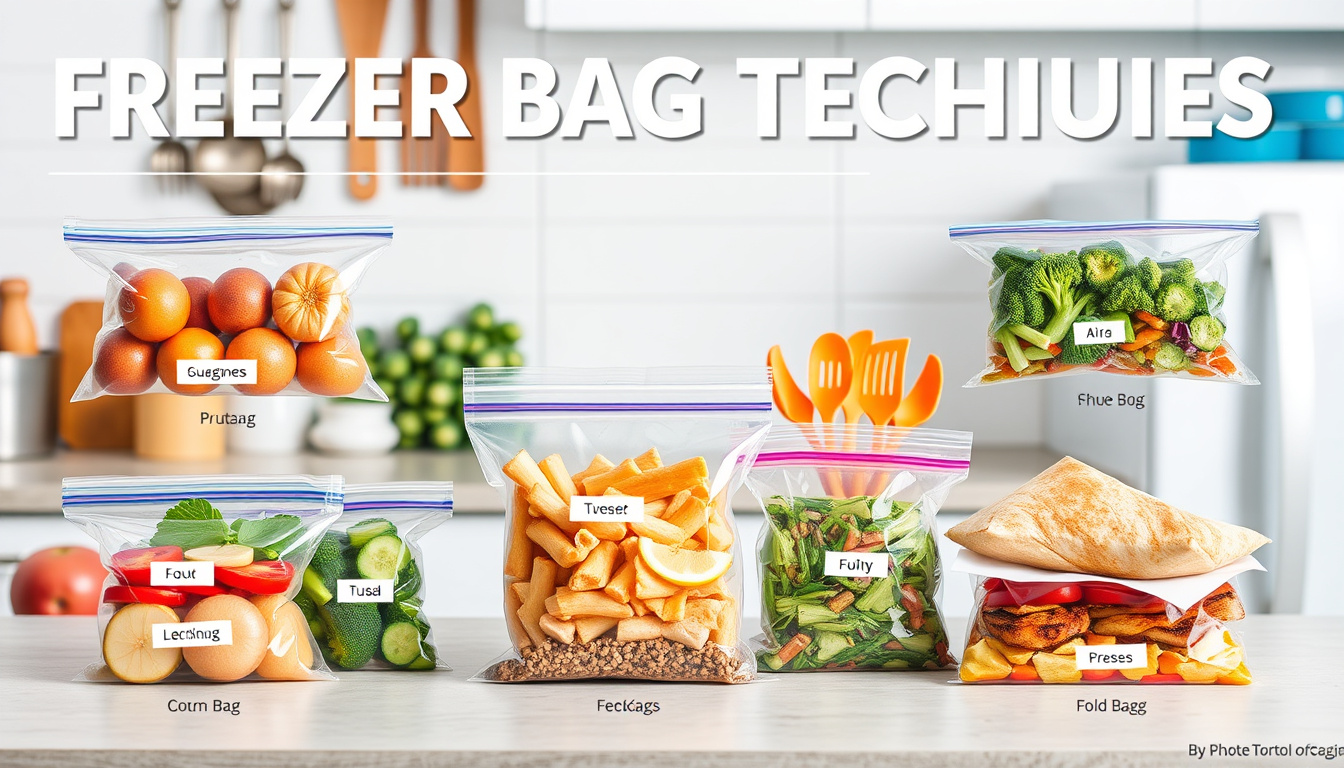Using freezer bags is a simple but effective way to extend the life of your food, prevent freezer burn, and maintain optimal freshness for future meals. Understanding how to properly utilize freezer bags not only saves money but also reduces food waste—essential for the environmentally conscious cook or anyone looking to streamline their kitchen routine. In this guide, we will explore the benefits of freezer bags, how to use them effectively, and tips for optimal food storage.
Understanding Freezer Bags
Freezer bags are specifically designed with thicker plastic compared to regular storage bags, making them more durable for extreme temperatures and less prone to punctures and tears. Key differences include:
- Thickness and Durability: Freezer bags are typically 3-5 mil thick, while regular zip-top bags are thinner. This extra durability is essential in preventing freezer burn and keeping food fresh for longer periods.
- Seal Quality: Most freezer bags come equipped with double zippers that help create an airtight seal. This is vital for preventing moisture from entering and protecting against the harsh conditions of a freezer.
- Special Features: Many brands incorporate features like easy-open tabs, stay-open designs for mess-free filling, and labels, which are helpful for organizing your stored items.
While regular bags can technically be used in the freezer, they pose a greater risk for freezer burn and quality degradation over time.
Best Practices for Using Freezer Bags
-
Choose the Right Size: Freezer bags are available in various sizes from pint to gallon. Always choose a size that matches your portion needs. For example, if you’re freezing single servings, smaller bags will work, while larger batches of soup or stews can go in larger bags.
-
Pre-cool Your Foods: Before sealing food in a freezer bag, ensure it has cooled down to avoid condensation, which can lead to ice crystals and freezer burn. Let warm items sit at room temperature for about 20-30 minutes before placing them in the bag.
-
Pack Wisely: When placing food in the freezer bag, aim to remove as much air as possible before sealing. This can be achieved by squeezing the bag to puff out excess air or using a vacuum sealer if you have one. Flattening the bags also allows for faster freezing and easier stacking in your freezer.
-
Label and Date: Always label your bags with the contents and date before placing them in the freezer. This simple step can prevent the guesswork when retrieving food later. Use freezer tape or a permanent marker for easy identification.
-
Thaw Safely: When it’s time to use your frozen food, avoid thawing it at room temperature, as this can promote bacterial growth. Instead, thaw food in the refrigerator, in cold water, or in the microwave. If using a microwave, cook the food immediately afterward to ensure safety.

Tips for Freezing Various Foods
- Soups and Stews: Freeze in flat bags to save space and speed up thawing.
- Cooked Grains: Portion them into bags, making it easy to reheat for quick meals.
- Fruits and Vegetables: For best textures, blanch vegetables before freezing. Fruits can be frozen spread out on a baking sheet to prevent sticking before being bagged.
- Meats: Wrap meats tightly in freezer-specific bags to prevent freezer burn. Individually portioning them can simplify meal prep later.
Reusing Freezer Bags
It is indeed possible to reuse high-quality freezer bags, provided they have not stored raw meats or foods that can lead to contamination. Clean them thoroughly with warm soapy water, rinse, and allow to dry completely before reuse.
Conclusion
Freezer bags are an essential tool in the modern kitchen, making meal prep more efficient while preserving the quality of your food. By understanding how to effectively use them—from selecting the right bag to mastering safe thawing techniques—you can maximize freshness and minimize waste in your kitchen. Incorporate these practices into your routine to ensure you’re always ready for healthy, home-cooked meals, even on the busiest days.
>> Chest Freezer Reviews <<
>> Upright Freezer Reviews <<

